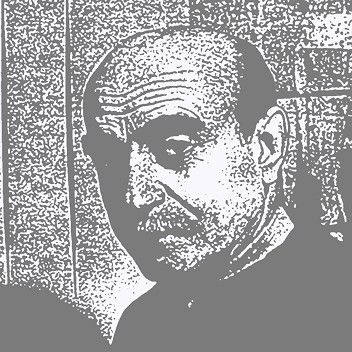Lucio Fontana
(Argentinian, 1899-1968)
Lucio Fontana is remembered as the founder of Spatialism - a movement that called for the engagement of art with contemporary technology in order to create a new, hybrid format combining architecture, sculpture and painting. The Spatialist manifesto, Manifesto Blanco (The White Manifesto) also established a subconscious element behind the work. Of his work Fontana has written that "I do not want to make a painting; I want to open up space, create a new dimension, tie in the cosmos, as it endlessly expands beyond the confining plane of the picture." This ideology led to his Concetto Spaziale (spatial concept) works, or 'slash' pieces, for which he is best known. Through these works, Fontana successfully promoted the idea of art-making as performance.
Born in 1899 in Argentina, Fontana was raised by his Italian parents in Milan from the age of six. He started his career as sculptor alongside his father. After serving in the Fist World War from 1917 - 18 (from which he was honourably discharged following an injury), he began studying sculpting at the Accademia de Brera. In 1922, he and his family relocated to Argentina where he began focussing on the relationship between surface and dimensionality. Early on while working in his father's workshop he garnered critical acclaim for his sculptures and opened his own studio in 1924. Four years later he returned the Accademia de Brera to study, quickly securing his first solo exhibition at the Galleria Il Milione in Milan in 1930.
Fontana first ventured into abstractionism during the 1940s. In 1946, he introduced Spatialism aiming to break through the two-dimensionality of the traditional picture pane with his Concetto Spaziale. Usually painted in monochrome, these works feature violent slashes which punctured the picture plane, morphing a two-dimensional canvas to a three-dimensional sculpture. As his style developed, he would back the voids with black fabric to further increase their sense of depth. He incorporates light into his later works called Ambiente Spaziele which he painted with fluorescent colours and displayed in a darkened room, illuminated by ultraviolet light. Following this body of work, he re-writes the Spatialism manifesto. His final years were characterised by experimentation with materials such as oil paint, metal sheets and sequins.
He was awarded the International Grand Prize for Painting at the 1966 Venice Biennale, just two years before his death in 1968 at the age of 69. Today, his works can be found in permanent collections of many renowned institutions around the world, including the Tate Gallery in London, the National Gallery of Art in Washington, D.C., the Kunstmuseum in Basel, and the Thyssen-Bornemisza Museum in Madrid.

